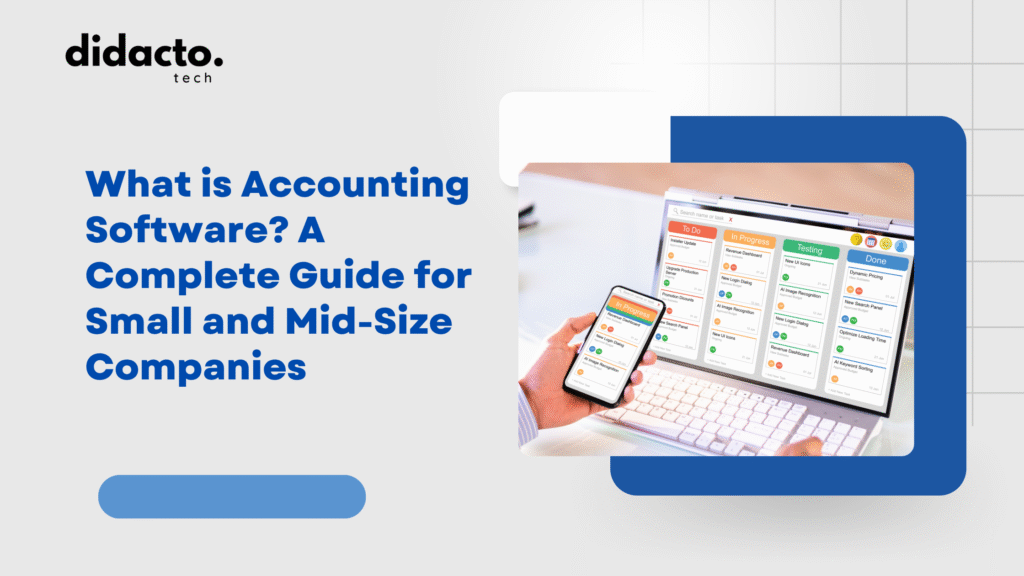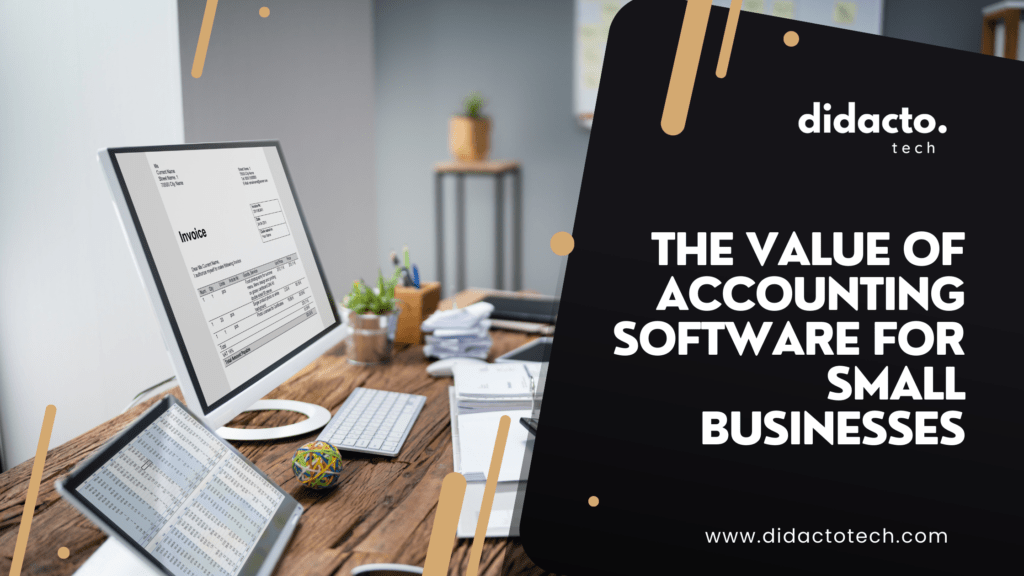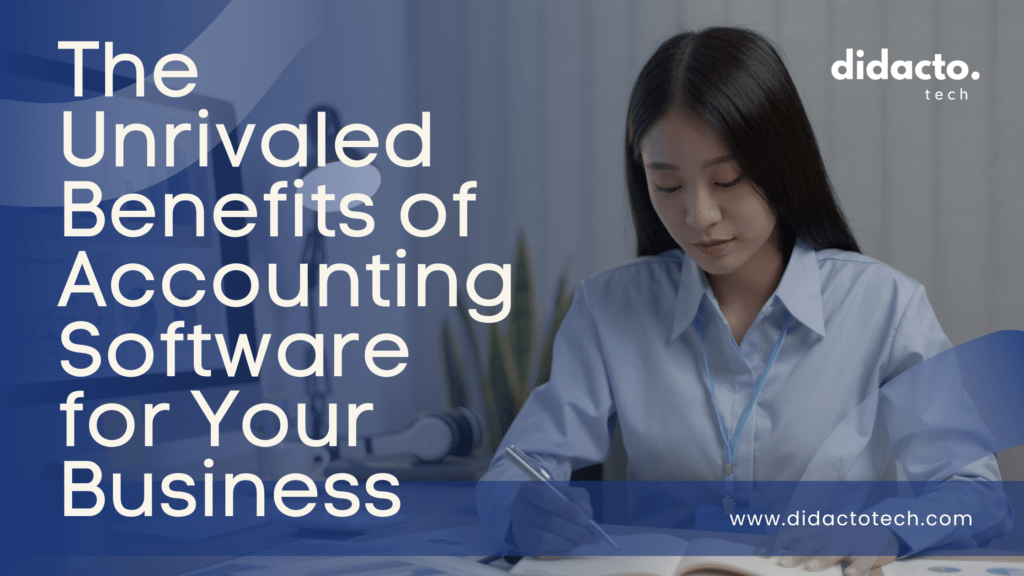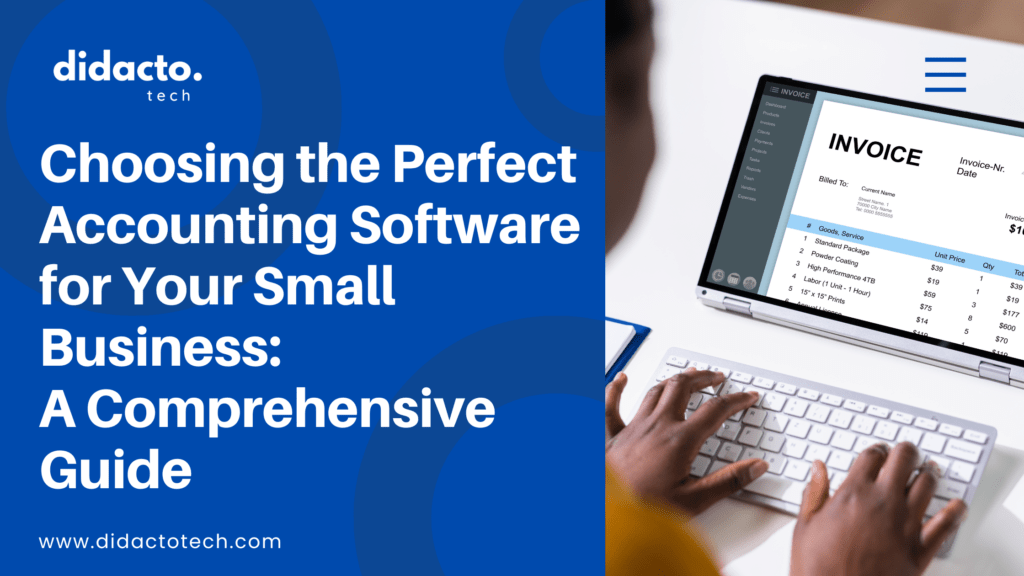Table of Contents
Introduction to Accounting Software
Definition and Purpose
Accounting software is a digital tool designed to help businesses manage their financial transactions, records, and reporting. Its main functions include tracking income and expenses, generating invoices, managing payroll, and producing financial statements. For small and mid-size companies, accounting software simplifies complex financial tasks, making it easier to stay organized and compliant.
Evolution of Accounting Tools
The journey from manual bookkeeping to modern accounting software is quite remarkable. Decades ago, businesses relied on paper ledgers and calculators, which were time-consuming and prone to errors. I remember my first job at a small retail store, where the owner spent hours each week balancing books by hand. The introduction of spreadsheets like Microsoft Excel was a game-changer, but it still required manual data entry. Today, digital accounting solutions automate much of this work, reducing errors and freeing up valuable time.
Types of Accounting Software
There are several types of accounting software available:
- Desktop Software: Installed directly on a computer, offering robust features but limited accessibility.
- Cloud-Based Software: Accessible from any device with internet access, ideal for remote teams and real-time collaboration.
- Industry-Specific Solutions: Tailored for unique needs, such as construction, retail, or non-profits, with specialized features.
Each type has its pros and cons, and the best choice depends on your business’s size, industry, and workflow.
Core Features of Accounting Software
Bookkeeping and Record Management
Accounting software automates the process of tracking income, expenses, and other financial transactions. Instead of sifting through piles of receipts, you can quickly categorize expenses, reconcile bank statements, and maintain up-to-date records. This not only saves time but also makes it easier to find information when you need it.
Invoicing and Payment Processing
Creating and sending invoices is a breeze with most accounting software. You can customize templates, set up recurring invoices, and even accept online payments. The software tracks which invoices are paid and which are overdue, helping you manage cash flow more effectively. I’ve found that automated reminders for late payments can make a big difference in getting paid on time.
Financial Reporting and Analysis
Generating reports like balance sheets, profit and loss statements, and cash flow summaries is one of the most valuable features. These reports provide a clear picture of your business’s financial health and help you make informed decisions. Many platforms also offer dashboards with visual insights, making it easier to spot trends and potential issues.
Benefits for Small and Mid-Size Companies
Time and Cost Efficiency
Automating routine tasks reduces the need for manual data entry and paperwork. This not only saves time but also cuts down on labor costs. In my experience, switching to accounting software allowed our team to focus more on growing the business rather than getting bogged down in administrative work.
Improved Accuracy and Compliance
Manual bookkeeping is prone to mistakes, which can lead to costly errors or compliance issues. Accounting software minimizes these risks by automating calculations and providing checks for common errors. Many solutions also stay updated with tax laws and regulations, helping you stay compliant without extra effort.
Better Decision Making
With real-time access to financial data, business owners can make quicker, more informed decisions. Whether it’s identifying profitable products or spotting unnecessary expenses, having up-to-date information at your fingertips is invaluable. I’ve seen firsthand how timely insights can help avoid cash flow problems and seize new opportunities.
Choosing the Right Accounting Software
Assessing Business Needs
Start by identifying your business’s specific needs. Consider the size of your company, the complexity of your finances, and any industry-specific requirements. Think about scalability—will the software grow with your business? Make a list of must-have features, such as payroll integration or multi-currency support.
Comparing Popular Solutions
Some of the leading accounting software options include:
- QuickBooks: Widely used, user-friendly, and suitable for a range of business sizes.
- Xero: Known for its cloud-based platform and strong integration capabilities.
- FreshBooks: Great for service-based businesses and freelancers.
- Sage: Offers robust features for more complex needs.
Each platform has its strengths and weaknesses. For example, QuickBooks is popular for its ease of use, while Xero is praised for its collaboration features. It’s worth trying out free trials to see which one fits your workflow best.
Implementation and Training
Transitioning to new software can be challenging. Plan for a smooth implementation by:
- Backing up existing data.
- Setting up the software with accurate opening balances.
- Training your team on how to use the new system.
Many providers offer tutorials, webinars, and customer support to help with onboarding. In my experience, investing time in proper training pays off in the long run.
Challenges and Considerations
Data Security and Privacy
Protecting sensitive financial data is crucial. Choose software with strong security measures, such as encryption and two-factor authentication. Regularly update passwords and restrict access to authorized users only. I always recommend reading the provider’s privacy policy to understand how your data is handled.
Integration with Other Systems
Your accounting software should work seamlessly with other tools you use, like payroll, inventory management, or CRM systems. Check for available integrations or APIs to avoid manual data transfers and ensure smooth workflows.
Ongoing Support and Updates
Reliable customer support is essential, especially if you encounter technical issues. Look for providers that offer regular software updates to address bugs, improve features, and stay compliant with changing regulations. I’ve found that responsive support can make a big difference during tax season or when troubleshooting problems.
Conclusion and Key Takeaways
Recap of Main Points
Accounting software has transformed the way small and mid-size companies manage their finances. It streamlines bookkeeping, invoicing, and reporting, while offering significant benefits in terms of efficiency, accuracy, and decision-making.
Future Trends in Accounting Software
Looking ahead, we can expect more automation, artificial intelligence, and integration with other business tools. Mobile access and real-time collaboration will continue to improve, making accounting even more accessible and efficient.
Final Thoughts for Small and Mid-Size Companies
If you haven’t already explored accounting software, now is a great time to start. Evaluate your needs, compare options, and invest in a solution that will support your business as it grows. The right software can free up your time, reduce stress, and help you focus on what matters most—running your business.
“Choosing the right accounting software isn’t just about keeping the books—it’s about building a stronger, more resilient business for the future.”
Frequently Asked Questions (FAQs)
1. What do you mean by accounting software?
Accounting software is a digital tool that helps businesses record, organize, and manage their financial transactions and reporting. It automates tasks like bookkeeping, invoicing, and generating financial statements.
2. How much does accounting software typically cost?
Costs vary widely. Basic plans for small businesses can start as low as $10–$30 per month, while more advanced or industry-specific solutions may cost $50–$200 per month or more. Some providers also offer one-time purchase options for desktop software
3. Can accounting software replace a professional accountant?
While accounting software automates many tasks, it doesn’t fully replace the expertise of a professional accountant. Accountants provide valuable advice, tax planning, and ensure compliance with complex regulations. Many businesses use both software and professional services together.
4. What software is used for accounting?
Popular options include QuickBooks, Xero, FreshBooks, Sage, and Wave. The best choice depends on your business’s size, industry, and specific needs.
5. How secure is my financial data in accounting software?
Most reputable accounting software providers use strong security measures, such as encryption and secure data centers. However, it’s important to follow best practices like using strong passwords and enabling two-factor authentication to further protect your data.
Most reputable accounting software providers use strong security measures, such as encryption and secure data centers. However, it’s important to follow best practices like using strong passwords and enabling two-factor authentication to further protect your data.





Pingback: What to Look for in Accounting Software for Small Businesses: A Complete Guide - didacto Tech
Pingback: 7 Best Accounting Software Options for Startups in 2025 - didacto Tech